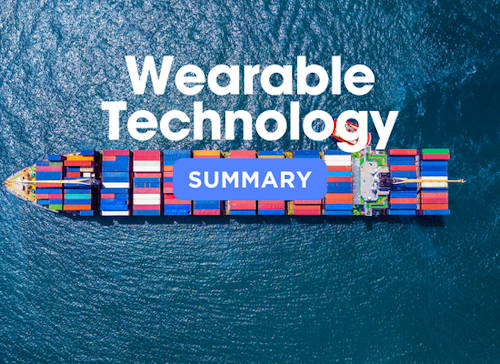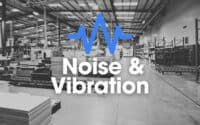Revolutionizing Maritime Safety: The Rise of Wearable Technology

Maritime safety is a paramount concern for the shipping industry, where challenging environments and complex operations pose significant risks to crew members. Ensuring safety at sea requires constant vigilance, advanced technology, and innovative solutions. Wearable technology is emerging as a crucial tool in this effort, offering real-time data, enhanced communication, and improved health monitoring. These wearable devices not only help address the unique challenges faced by maritime workers but also significantly enhance overall safety and operational efficiency.
Types of Wearable Technology in Maritime Safety
Smart Helmets
- Features: Smart helmets, like the DAQRI Smart Helmet, come equipped with augmented reality (AR) displays, impact sensors, and integrated communication systems.
- Benefits: These helmets provide real-time data overlays, enhancing situational awareness and reducing the risk of accidents. The integrated communication system allows for seamless interaction between crew members and onshore teams, ensuring quick and efficient responses to potential hazards.
Smartwatches and Fitness Trackers
- Features: Devices such as the Garmin MARQ Captain and Fitbit monitor heart rates, GPS locations, and offer SOS alert functionalities.
- Benefits: These wearables enable continuous health monitoring, allowing for early detection of health issues. The GPS tracking feature is crucial for emergency response, ensuring that crew members can be located and assisted promptly.
Augmented Reality (AR) Glasses
- Features: AR glasses like Vuzix Blade provide hands-free access to information, navigation aids, and hazard detection capabilities.
- Benefits: By displaying real-time navigation data, ship status updates, and environmental hazards directly in the user’s field of view, these glasses improve decision-making and operational efficiency, reducing the likelihood of accidents.
Wearable Cameras
- Features: Body-mounted cameras such as GoPro can stream real-time video and record incidents.
- Benefits: These cameras enhance accountability, provide valuable material for training and analysis, and enable real-time monitoring of operations, ensuring that any issues can be quickly addressed.
Exoskeletons
- Features: Exoskeletons, developed by companies like Ekso Bionics, provide mechanical support for lifting and carrying heavy loads.
- Benefits: These devices reduce physical strain on workers, helping to prevent musculoskeletal injuries and improving productivity. Exoskeletons can significantly enhance the safety and efficiency of manual labor on ships.
| Type of Wearable | Features | Benefits |
|---|---|---|
| Smart Helmets | AR displays, impact sensors, communication systems | - Enhanced situational awareness - Injury prevention |
| Smartwatches/Fitness Trackers | Heart rate monitoring, GPS tracking, SOS alerts | - Continuous health monitoring - Emergency response |
| AR Glasses | Hands-free data access, navigation aids, hazard detection | - Real-time guidance - Improved operational efficiency |
| Wearable Cameras | Real-time video streaming, incident recording | - Accountability - Training analysis |
| Exoskeletons | Mechanical support for lifting | - Reduced physical strain - Injury prevention |
| Metric | Data/Insight |
|---|---|
| Adoption Rates | - Smart Helmets: 55% on offshore platforms [Maritime Technology Report, 2023] - Smartwatches: 70% in maritime companies [Seafarers Journal, 2022] |
| Health Monitoring Impact | - Health incidents reduced by 15% with wearables [Health Tech Insights, 2023] |
| Communication Efficiency | - Improved by 20% with wearable tech [Maritime Communication Study, 2021] |
| Accident Reduction | - 35% reduction in on-deck accidents [Safety at Sea Report, 2022] |
| Emergency Response | - Response times improved by 25% [Emergency Response Tech Report, 2022] |
| Training Efficiency | - Increased by 30% using recorded data [Training Innovations Journal, 2023] |
| Cost Savings | - Average savings of $200,000 per year per ship post-implementation [Financial Impact Study, 2022] |
Benefits of Wearable Technology in Maritime Safety
Improved Health Monitoring
- Continuous Vital Signs Monitoring: Wearable devices such as smartwatches and fitness trackers enable continuous monitoring of vital signs like heart rate, blood pressure, and oxygen levels. This real-time health data allows for the early detection of potential medical issues, ensuring timely intervention and treatment. For example, if a crew member's heart rate suddenly spikes or drops, the device can send an alert, prompting immediate medical attention.
- Preventive Health Measures: By tracking health metrics over time, wearable technology can help identify trends and patterns, allowing for preventive health measures. This proactive approach can reduce the occurrence of serious health emergencies at sea.
Enhanced Communication
- Seamless Communication Systems: Wearable devices integrated with communication systems, such as smart helmets and AR glasses, facilitate seamless communication between crew members and with onshore support teams. This is crucial during emergencies when quick and clear communication can save lives.
- Improved Coordination: Enhanced communication capabilities improve coordination during complex operations, reducing the risk of misunderstandings and errors. For instance, during cargo loading and unloading, real-time communication can ensure that operations are conducted smoothly and safely.
Increased Situational Awareness
- Real-Time Data and Analytics: Wearable technology provides access to real-time data and analytics, enhancing situational awareness for crew members. AR glasses can display critical information such as navigation data, weather conditions, and hazard alerts directly in the user's field of view.
- Better Decision-Making: With access to comprehensive real-time data, crew members can make informed decisions quickly, reducing the likelihood of accidents and improving overall operational efficiency.
Accident Prevention and Response
- Immediate Alerts: Wearable devices equipped with sensors can detect dangerous conditions and send immediate alerts to the crew. For example, gas detection sensors can warn crew members of toxic fumes, allowing them to evacuate or take necessary precautions.
- Faster Emergency Response: In the event of an accident, wearable technology can expedite emergency response. Devices like smartwatches can send SOS signals along with the wearer's location, enabling rescuers to reach the affected crew member quickly.
Training and Performance Improvement
- Recording and Analysis: Wearable cameras and other devices can record work practices and operations, providing valuable data for training and performance analysis. Reviewing recorded footage can help identify areas for improvement and enhance training programs.
- Enhanced Training Programs: The insights gained from wearable technology can be used to develop more effective training programs that address specific safety challenges and improve overall performance.
Challenges and Considerations
Privacy and Data Security
- Data Collection Concerns: The use of wearable technology involves the collection of personal health and location data, which raises significant privacy concerns. Crew members may feel uncomfortable knowing that their biometric data and movements are being constantly monitored.
- Ensuring Data Security: To address these concerns, maritime companies must implement robust data security measures. This includes encrypting data, ensuring secure data storage, and limiting access to sensitive information. Additionally, companies should develop clear policies on data usage and privacy to build trust among crew members.
Adoption and Training
- Integrating New Technology: Introducing wearable technology to the maritime industry requires significant changes in daily operations. Crew members need to adapt to using these new devices, which can be challenging, especially for those who are less tech-savvy.
- Comprehensive Training Programs: Effective training programs are essential to ensure that crew members understand how to use wearable technology properly. Training should cover device functionalities, data interpretation, and troubleshooting. Regular refresher courses can help keep the crew updated on new features and best practices.
Cost and Maintenance
- Initial Investment: The upfront cost of purchasing wearable devices and integrating them into the ship's systems can be substantial. This includes not only the cost of the devices themselves but also the necessary infrastructure for data transmission and storage.
- Ongoing Maintenance: Wearable technology requires regular maintenance to ensure optimal performance. This includes software updates, battery replacements, and addressing any technical issues that arise. Companies must allocate resources for ongoing support and maintenance to maximize the benefits of these devices.
Technological Limitations
- Battery Life: One of the main limitations of wearable devices is battery life. In a maritime environment, where access to charging facilities may be limited, ensuring that devices remain operational throughout long shifts can be challenging.
- Durability in Harsh Environments: Maritime operations expose wearable devices to harsh conditions, including saltwater, extreme temperatures, and physical impact. Devices must be rugged and durable to withstand these environments and continue functioning reliably.
- Data Accuracy: The accuracy of data collected by wearable devices is crucial for making informed decisions. Ensuring that sensors are calibrated correctly and that data is interpreted accurately is essential for the effectiveness of these technologies.
Future Trends and Developments
Advancements in Wearable Technology
- Longer Battery Life: Future developments in battery technology are expected to extend the battery life of wearable devices, making them more practical for long-duration maritime operations.
- Enhanced Durability: Advances in materials science will lead to more robust and durable wearable devices capable of withstanding the harsh maritime environment.
- Improved Sensor Accuracy: Continued innovation in sensor technology will enhance the accuracy of data collected by wearable devices, leading to better health monitoring and situational awareness.
Integration with Other Technologies
- IoT and Big Data: Combining wearable technology with the Internet of Things (IoT) and big data analytics can provide comprehensive insights into ship operations and crew health. This integration can lead to more proactive safety measures and optimized performance.
- Artificial Intelligence (AI): AI can be used to analyze data from wearable devices, providing predictive insights and automating responses to potential safety issues. For example, AI algorithms can predict equipment failures or health emergencies based on trends in the data.
Regulatory and Industry Standards
- Evolving Regulations: As wearable technology becomes more prevalent, regulatory bodies will develop standards to ensure the safety and efficacy of these devices. Compliance with these regulations will be crucial for maritime companies.
- Industry Best Practices: Establishing industry best practices for the use of wearable technology can help standardize its adoption and ensure that all maritime operators benefit from these advancements. Collaboration among industry stakeholders will be key to developing these practices.
Wearable technology is poised to revolutionize maritime safety, offering significant benefits in health monitoring, communication, situational awareness, accident prevention, and training. By addressing challenges related to privacy, adoption, and cost, the maritime industry can fully leverage these technologies to enhance safety and efficiency. As innovation continues, wearable technology will play an increasingly vital role in shaping the future of maritime operations, ensuring a safer and more sustainable industry.

Do you have a Maritime Product or Service that may be of interest to Shipowners? Tell us about it here!
Do you have feedback or insights? Please reach out to editor @ shipuniverse.com



